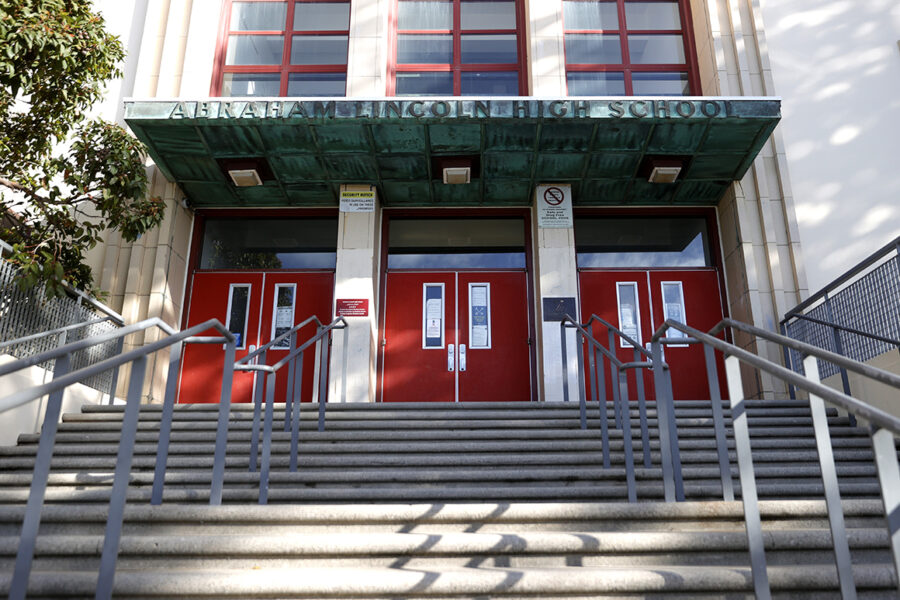San Francisco lawmakers: Our city schools exploited state reopening law

San Francisco lawmakers on Monday accused their own city’s school district of exploiting state reopening incentives, saying they are “gravely concerned” that one of the biggest districts in California has failed to make a genuine effort to welcome back students in-person.
Democratic Assemblymembers Phil Ting and David Chiu and Sen. Scott Wiener asked the state not to give San Francisco Unified School District a reopening grant. They called the district’s plan to bring back 12th graders for a handful of days “a poor attempt to exploit a perceived legal loophole” in a letter to State Controller Betty Yee and State Superintendent of Public Instruction Tony Thurmond.
San Francisco Unified offers some of the sparsest classroom instruction in the nation, even though the city has some of the lowest infection rates anywhere in the U.S. After several months of negotiations with the United Educators of San Francisco, elementary schools in the district started to reopen to their youngest students in mid-April, and a limited set of high-risk students in middle and high schools on April 26.
Earlier this month, the district announced that all high school seniors get a chance to return for hybrid in-person learning starting on May 14 — one day before the state deadline to bring back at least one full grade of high school to qualify for grant money. Most of those seniors are only guaranteed “at least three days” of campus instruction before the school year ends on June 2.
The district believes it now qualifies for $12 million in state reopening funds and cited the education code in its press release announcing the move. Of the district’s nearly 60,000 students, 19,000 students have returned to in-person learning in some capacity, according to the district.
Legislators are calling on state officials to ensure that only districts that adhered to the intent of the state law receive the grants.
CA AB86 (21R) offers billions in grants to school districts that reopened before April 1, gradually reducing the funding for every day that school districts waited to open. A district that does not open for in-person instruction by May 15 forfeits their entire share of $2 billion in overall state reopening funds, according to the bill.
Lawmakers Monday said in the letter that SFUSD’s hybrid, staggered plan does not offer in-person instruction “to the greatest extent possible,” as outlined in AB 86.
“We ask you to ensure that these loopholes, which are intended to skirt these funding guidelines, are not allowed. We need accountability of and responsibility from our school districts now more than ever,” states the letter.
SFUSD Superintendent Vincent Matthews defended the staggered roll out, saying that the district struggled with issues like whether it had enough teachers willing to return in-person.
“This gradual rollout enabled us to both provide intensive support to our schools as they brought students back into classrooms after a year of distance learning and to learn along the way. At each successive stage it was not entirely clear if we had the staffing to get to the next stage,” Matthews said in an email. “Once we reopened to our focal student populations in middle and high schools, we were able to assess what was possible for reopening a full grade level.”
SB 86 was a hard-fought deal struck by Newsom, lawmakers and teachers unions. State leaders used a carrot approach of trying to convince districts to reopen with the prospect of additional state grant money, and they chose not to mandate a return to classrooms.
California remains one of the slowest states to reopen this spring despite having some of the lowest infection rates in the nation. Widespread vaccine availability and diminishing virus rates eased tensions between districts and teachers unions this spring. But that didn’t mean all districts threw open their doors. Some districts decided to stay shut the remainder of the semester, foregoing state money, while others brought back students for two days a week in a hybrid approach.
In order for schools to receive the funding, they must offer in-person instruction to students K-6, and at least one full grade of middle and high school. School districts are slated to get a record amount of money in the coming years due to a state surplus and federal coronavirus relief, which has made the $2 billion in state reopening grants somewhat less crucial to districts hesitant to bring students back.
Go To Source
Author: POLITICO

